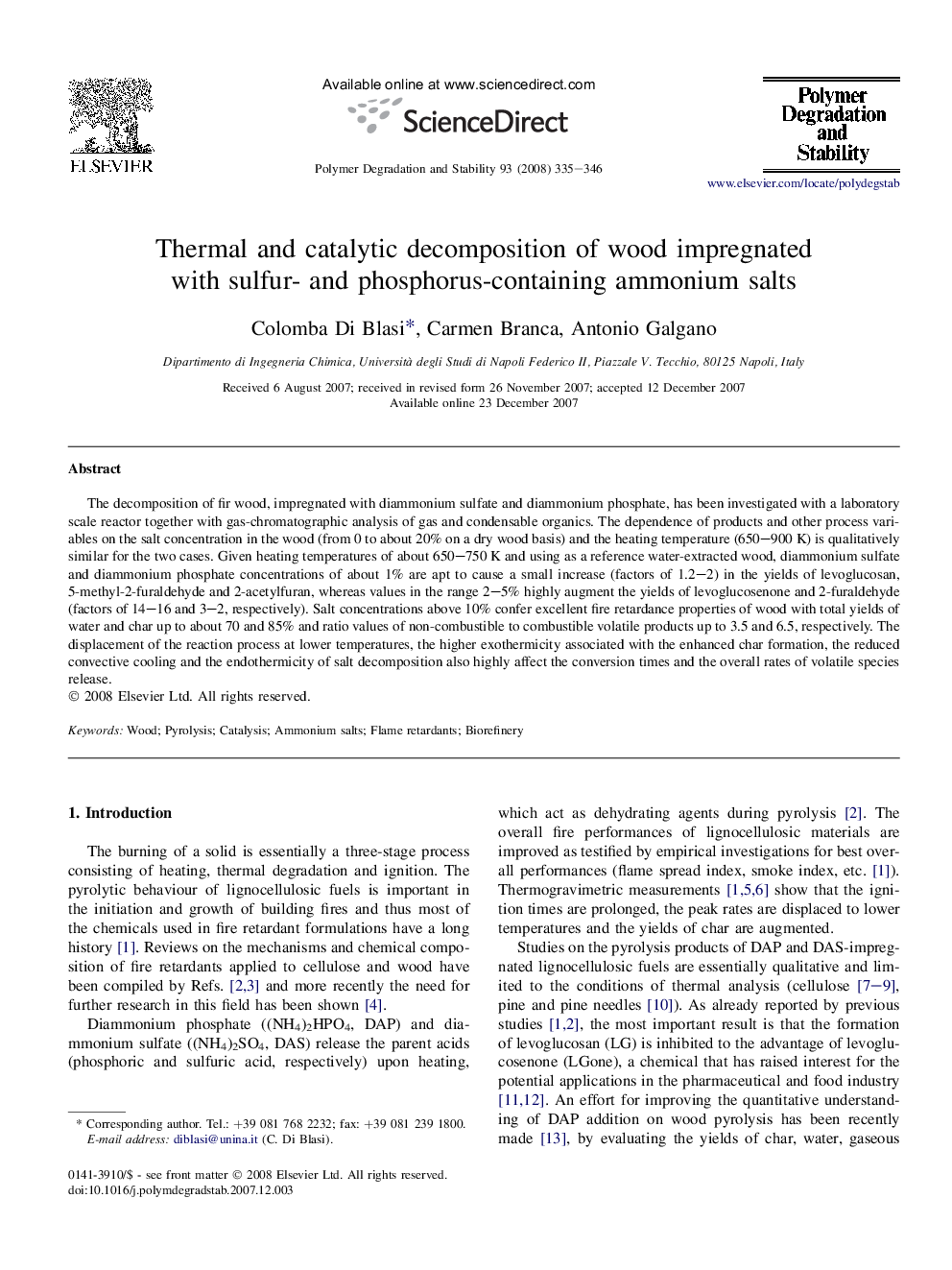| Article ID | Journal | Published Year | Pages | File Type |
|---|---|---|---|---|
| 5204190 | Polymer Degradation and Stability | 2008 | 12 Pages |
The decomposition of fir wood, impregnated with diammonium sulfate and diammonium phosphate, has been investigated with a laboratory scale reactor together with gas-chromatographic analysis of gas and condensable organics. The dependence of products and other process variables on the salt concentration in the wood (from 0 to about 20% on a dry wood basis) and the heating temperature (650-900Â K) is qualitatively similar for the two cases. Given heating temperatures of about 650-750Â K and using as a reference water-extracted wood, diammonium sulfate and diammonium phosphate concentrations of about 1% are apt to cause a small increase (factors of 1.2-2) in the yields of levoglucosan, 5-methyl-2-furaldehyde and 2-acetylfuran, whereas values in the range 2-5% highly augment the yields of levoglucosenone and 2-furaldehyde (factors of 14-16 and 3-2, respectively). Salt concentrations above 10% confer excellent fire retardance properties of wood with total yields of water and char up to about 70 and 85% and ratio values of non-combustible to combustible volatile products up to 3.5 and 6.5, respectively. The displacement of the reaction process at lower temperatures, the higher exothermicity associated with the enhanced char formation, the reduced convective cooling and the endothermicity of salt decomposition also highly affect the conversion times and the overall rates of volatile species release.
